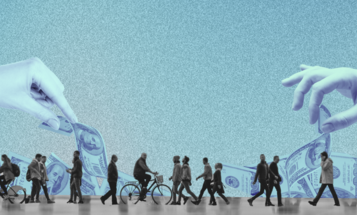
Political Power and the Decline of Unions
Using political power to keep employees from organizing unions can be highly effective. That’s one forceful lesson to draw from the new figures on union membership released this week by the Bureau of Labor Statistics. According to the BLS, the total number of union members fell by 400,000 in 2012, and unions now represent just 11.3 percent of the nation’s workforce. As I’ve argued in the past, the continuing decline of organized labor is bad news for the middle class who need power in the workplace to get a fair economic deal.
So where does the political power come in? Most obviously, in states like Wisconsin, where union membership dropped steeply in the wake of Governor Walker’s 2011 law curtailing the ability of most public employees to participate in collective bargaining. Similarly new laws to undercut unions in Michigan and Indiana may have played a role in those states’ falling unionization rates. As the New York Times notes, “union membership fell by 13 percent last year in Wisconsin and by 18 percent in Indiana — both unusually large numbers for a single year.”
But a slower and more subtle use of political influence is also at work across the nation. The promise of the National Labor Relations Act, intended to uphold Americans’ right to band together to bargain for a better deal at work, has been undermined by decades of anti-union legal and political decisions:
Over the decades, and especially during the Bush years, the National Labor Relations Board (NLRB) strayed from its mission of protecting workers' rights. The Board increasingly sided with employers, turning a blind eye to employers' anti-union threats and coercion, allowing employers to enact workplace policies that inhibit employees' established rights to freedom of association, and restricting the rights to nurses, temp workers, college instructors, and other broad groups of employees to even make a choice about union representation.
Illegal anti-union tactics by employers grew more pervasive as a result. Research by Cornell University professor Kate Bronfenbrenner reveals that today more than half of employers faced with a union organizing drive illegally threaten to close down their facility if the union wins, while one in three companies illegally fire workers for union activity. Employers regularly engage in surveillance, intimidation and harassment of employees trying to unionize. The NLRB's dereliction of duty means that supporting a union at work now poses workers with a significant risk of getting fired.
Kris Warner of the Center for Economic and Policy Research highlights the impact of this political decision-making by comparing the United States unionization rate to that of Canada, which has gone through similar economic and social changes as the U.S. but has not seen such a dramatic plunge in union membership. The difference, Warner writes, lies in each country's system of rules around how unions can organize and bargain. And things are only getting worse in the United States: the political attack on unions continues with efforts in recent years to further weaken the NLRB and vigorous opposition to something as simple as putting up a poster to remind employees of rights they’ve had for 76 years. Is it any wonder that unionization rates are declining?
The good news is, if political power can effectively keep Americans from exercising their right to band together and form a union, politics can also smooth the road. Demos has argued for federal legislation to strengthen the right to organize. President Obama’s NLRB can and should also continue working to strengthen regulations protecting workplace rights.
Of course politics isn’t the only influence on the long-term decline of unionization. Factors like increased international trade, technological change, and the shift to a service economy also played a role.
But there’s something else that can’t be left out of the equation: workers themselves. As Sarita Gupta, Executive Director, Jobs with Justice and American Rights at Work points out on Huffington Post
For every union job shed, there is a worker standing up and fighting for a better workplace. While the BLS numbers don't reflect this renewed commitment to worker organizing, we saw it out in full force this year, from Walmart associates, warehouse workers and guest laborers along the giant retailer's supply chain, to fast food workers, to taxi drivers in our country's biggest cities, to port truck drivers at the nation's largest seaports, to car wash workers in the Bronx and warehouse workers at IKEA. Even without the protection of the NLRA at times, these workers are joining together to improve their rights and opportunities on the job… Together, we're not mourning over the decline of unions, we're organizing by building broad-based unity against the attacks on workers, our families and our communities.



